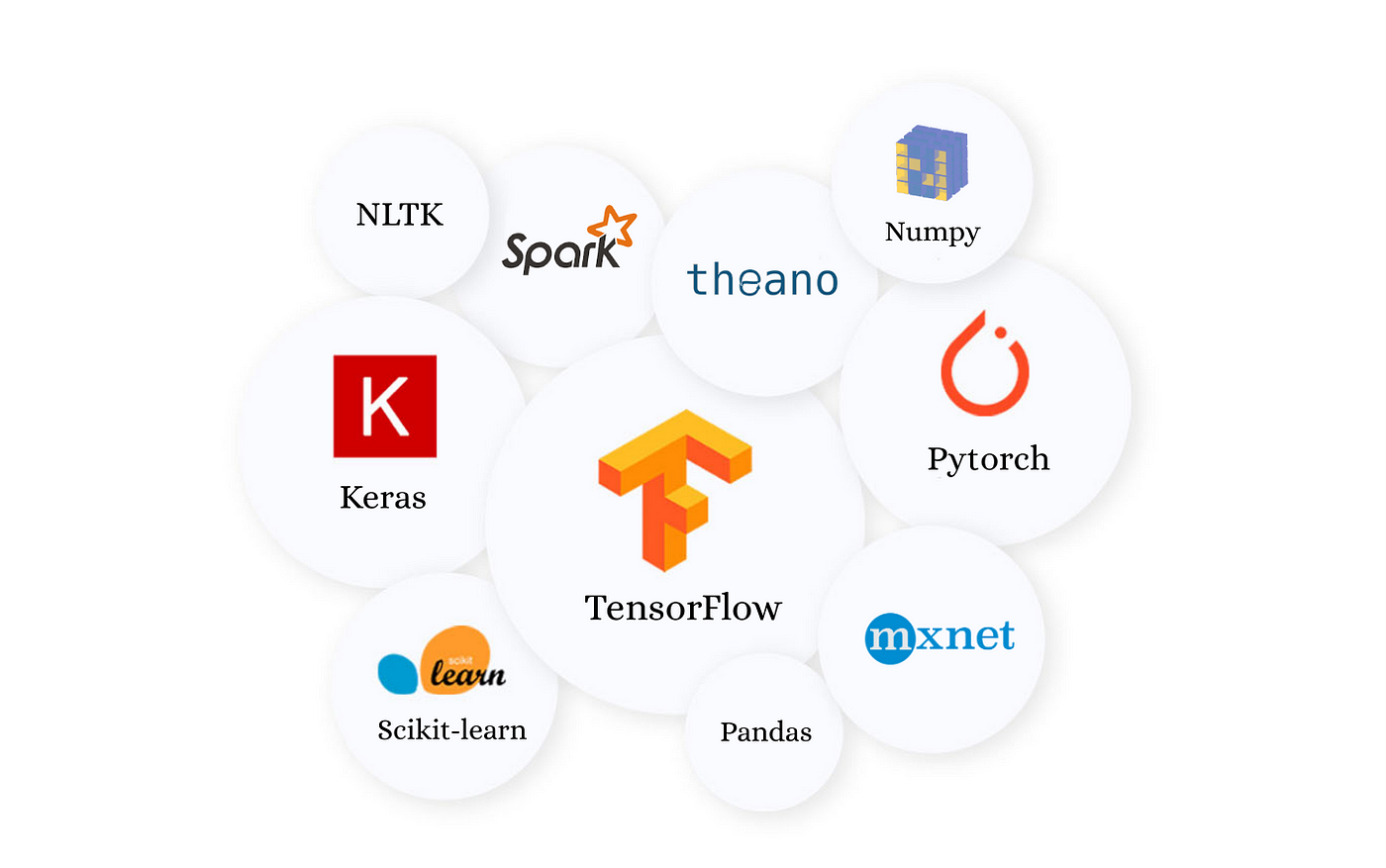🚀 Top Python AI & ML Libraries: Features, Examples & Use Cases �
🚀 Top Python AI & ML Libraries: Features, Examples & Use Cases �
Artificial Intelligence (AI) and Machine Learning (ML) have revolutionized industries, from healthcare to finance. Python, with its rich ecosystem of libraries, is the go-to language for AI/ML development. In this blog, we’ll explore the most powerful Python AI & ML libraries, their key features, and real-world use cases.

1. TensorFlow 🧠
Developed by: Google
Best for: Deep Learning, Neural Networks
Key Features:
✔ Flexible architecture — Works on CPUs, GPUs, and TPUs
✔ Keras integration — High-level API for quick model building
✔ Scalability — Supports distributed computing
✔ Deployment-ready — TensorFlow Lite for mobile, TensorFlow.js for web
Example: Image Classification
import tensorflow as tf
from tensorflow.keras import layers
model = tf.keras.Sequential([
layers.Conv2D(32, (3,3), activation='relu', input_shape=(28,28,1)),
layers.MaxPooling2D((2,2)),
layers.Flatten(),
layers.Dense(10, activation='softmax')
])
model.compile(optimizer='adam', loss='sparse_categorical_crossentropy', metrics=['accuracy'])
model.fit(train_images, train_labels, epochs=5)Use Case:
🔹 Self-driving cars (object detection)
🔹 Medical imaging (tumor detection)
2. PyTorch 🔥
Developed by: Facebook
Best for: Research, Dynamic Computation Graphs
Key Features:
✔ Dynamic computation graph — Easier debugging
✔ Strong GPU acceleration — Optimized for CUDA
✔ TorchScript — Model deployment in C++
✔ Huge community — Popular in academia
Example: NLP with Transformers
import torch
from transformers import BertTokenizer, BertModel
tokenizer = BertTokenizer.from_pretrained('bert-base-uncased')
model = BertModel.from_pretrained('bert-base-uncased')
inputs = tokenizer("Hello, AI world!", return_tensors="pt")
outputs = model(**inputs)Use Case:
🔹 Chatbots & virtual assistants
🔹 Sentiment analysis
3. Scikit-learn 📊
Best for: Traditional ML, Supervised/Unsupervised Learning
Key Features:
✔ Simple & consistent API — Easy to use
✔ Wide algorithm support — Regression, Classification, Clustering
✔ Model evaluation tools — Cross-validation, metrics
Example: Predicting House Prices
from sklearn.ensemble import RandomForestRegressor
from sklearn.model_selection import train_test_split
X_train, X_test, y_train, y_test = train_test_split(X, y, test_size=0.2)
model = RandomForestRegressor()
model.fit(X_train, y_train)
predictions = model.predict(X_test)Use Case:
🔹 Credit scoring
🔹 Customer segmentation
4. OpenCV 🖼️
Best for: Computer Vision
Key Features:
✔ Real-time image/video processing
✔ Face & object detection
✔ AR/VR support
Example: Face Detection
import cv2
face_cascade = cv2.CascadeClassifier('haarcascade_frontalface_default.xml')
img = cv2.imread('group_photo.jpg')
gray = cv2.cvtColor(img, cv2.COLOR_BGR2GRAY)
faces = face_cascade.detectMultiScale(gray, 1.1, 4)
for (x, y, w, h) in faces:
cv2.rectangle(img, (x, y), (x+w, y+h), (255, 0, 0), 2)Use Case:
🔹 Surveillance systems
🔹 Augmented Reality filters
5. NLTK & spaCy 📝
Best for: Natural Language Processing (NLP)
Key Features:
✔ Tokenization, POS tagging, NER
✔ Pre-trained models (BERT, GPT-3 integration)
Example: Sentiment Analysis
import spacy
nlp = spacy.load("en_core_web_sm")
doc = nlp("This movie was amazing!")
print(doc.sentiment) # Output: PositiveUse Case:
🔹 Automated customer support
🔹 Fake news detection
6. XGBoost & LightGBM ⚡
Best for: Gradient Boosting, Competitions
Key Features:
✔ Handles missing data
✔ Faster training than traditional methods
Example: Fraud Detection
import xgboost as xgb
model = xgb.XGBClassifier()
model.fit(X_train, y_train)
fraud_pred = model.predict(X_test)Use Case:
🔹 Bank fraud detection
🔹 Recommendation systems
Conclusion 🎯
Python’s AI/ML libraries offer speed, flexibility, and scalability for various applications. Whether you’re into deep learning (TensorFlow/PyTorch), traditional ML (Scikit-learn), or NLP (spaCy), there’s a library for every need!
🚀 Which library do you use the most? Comment below! 👇
Tags: #Python #MachineLearning #ArtificialIntelligence #DataScience #DeepLearning #AI #Programming
Comments
Post a Comment